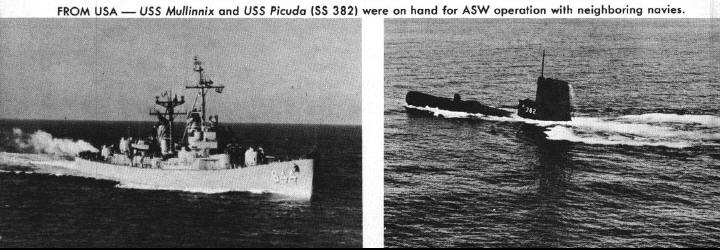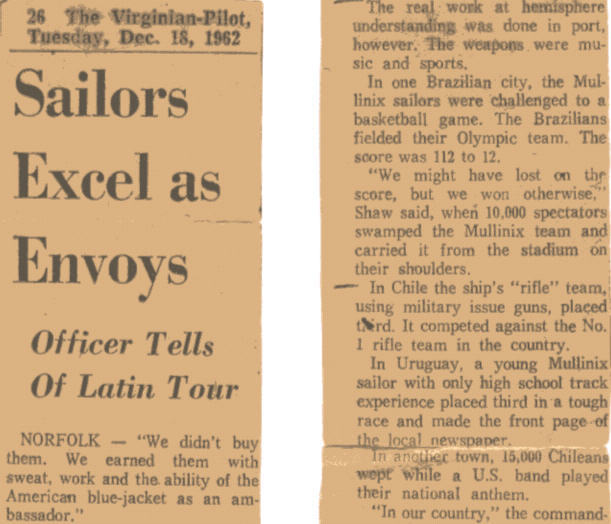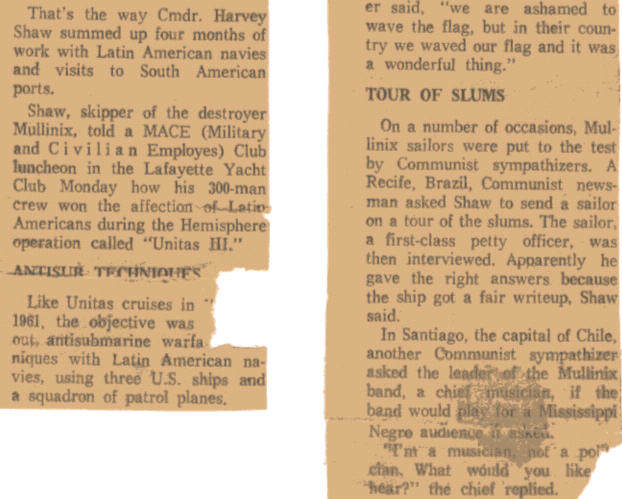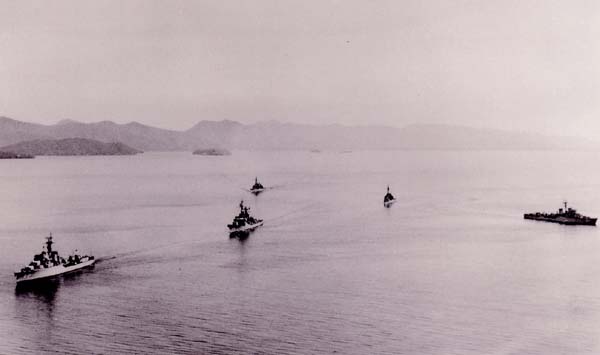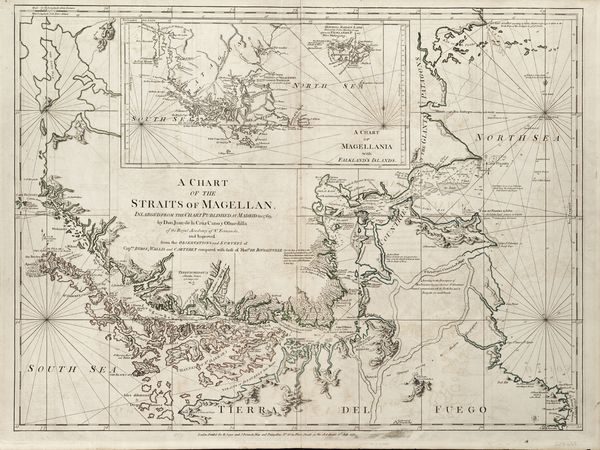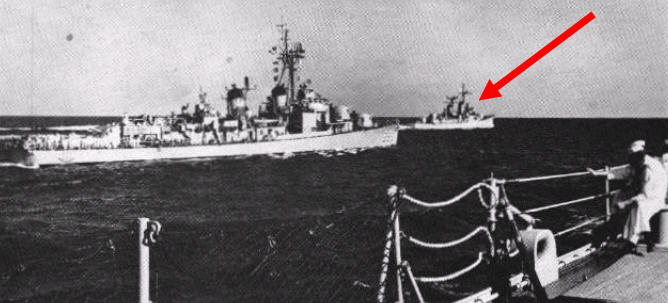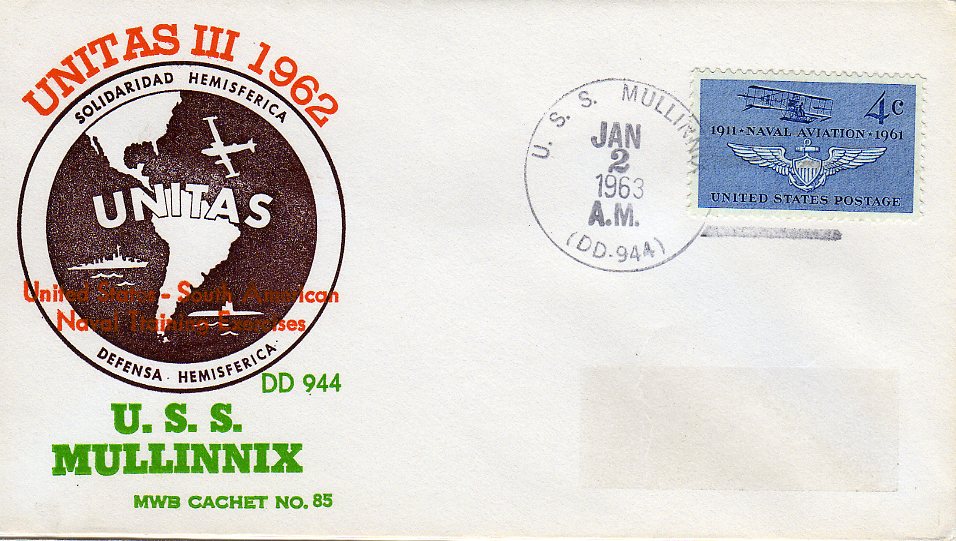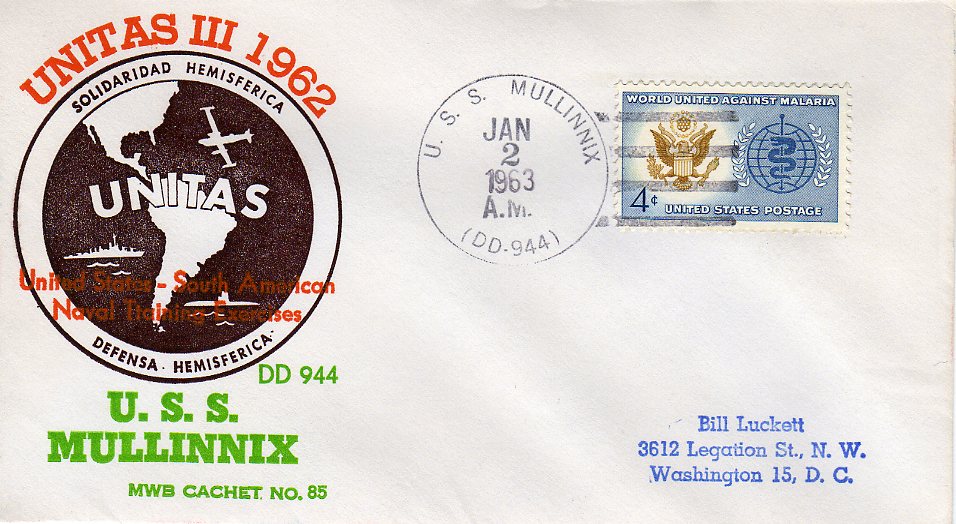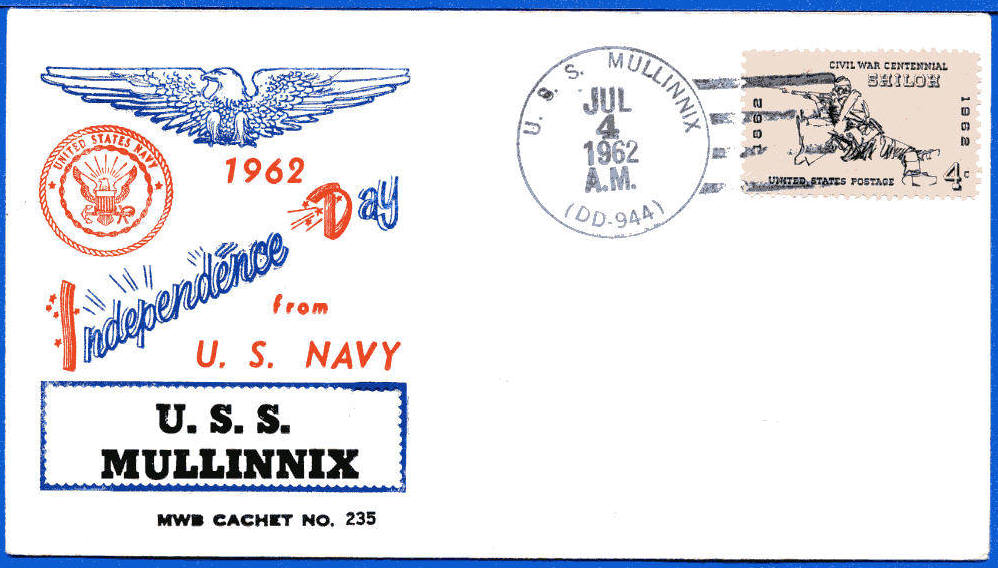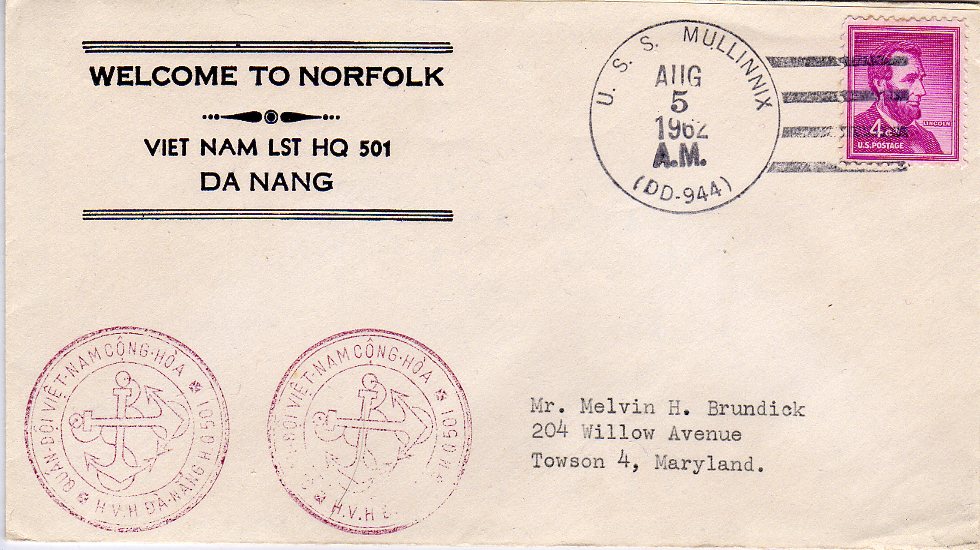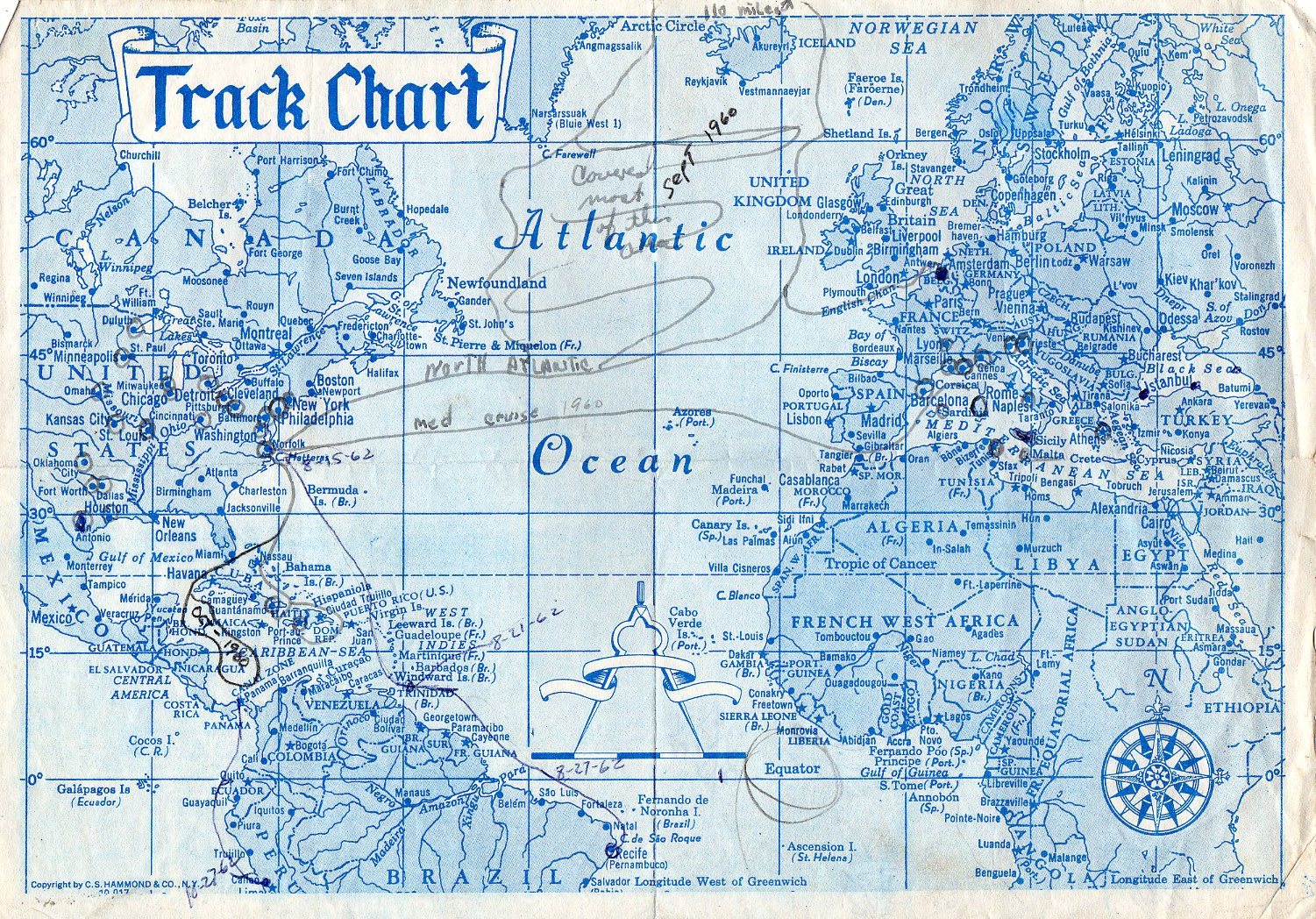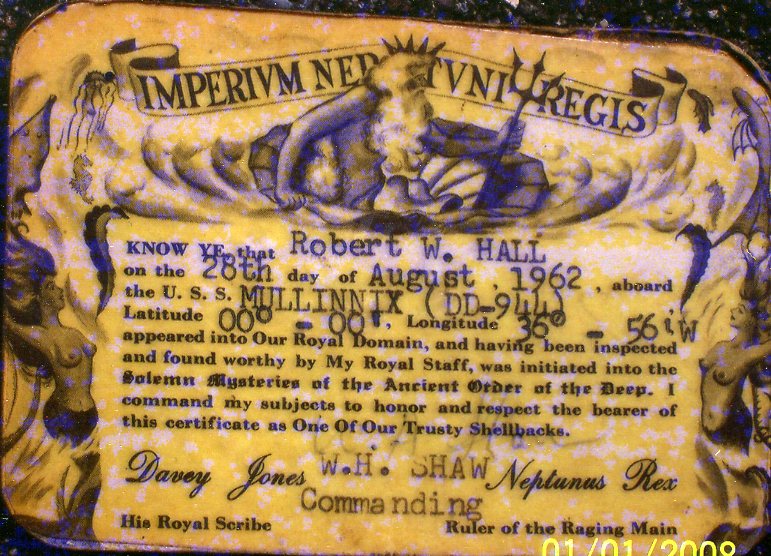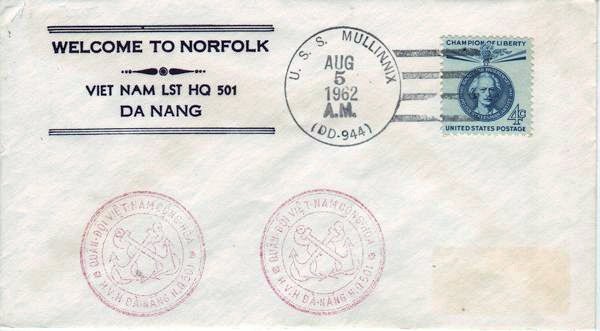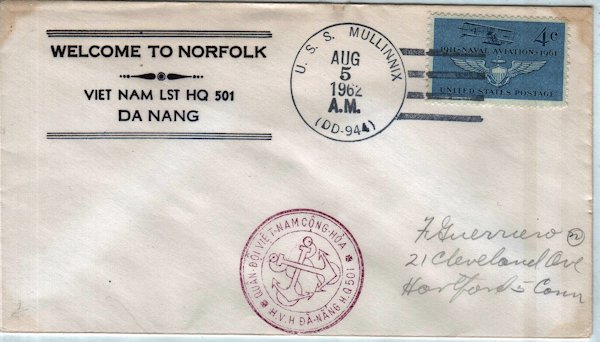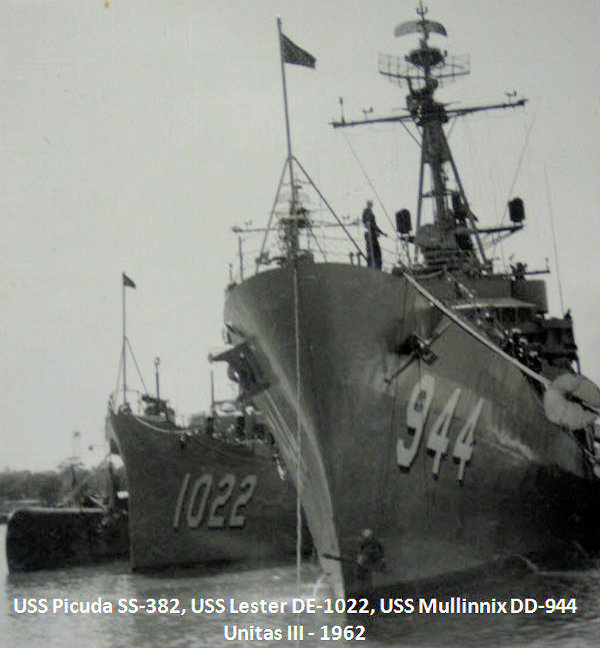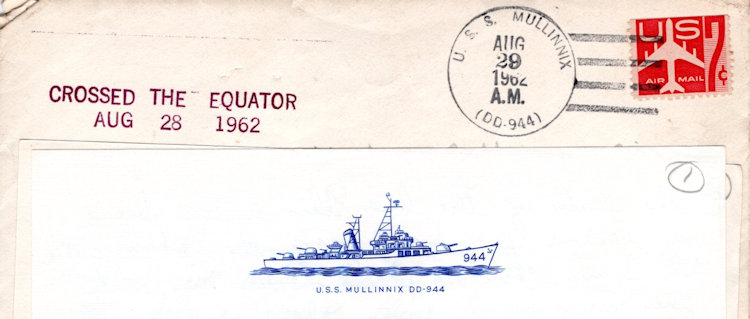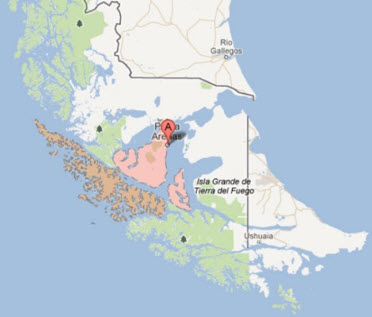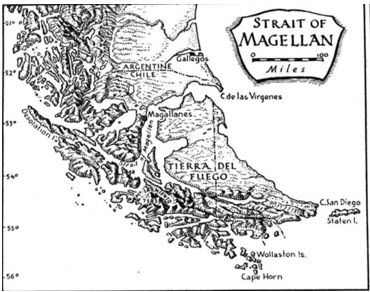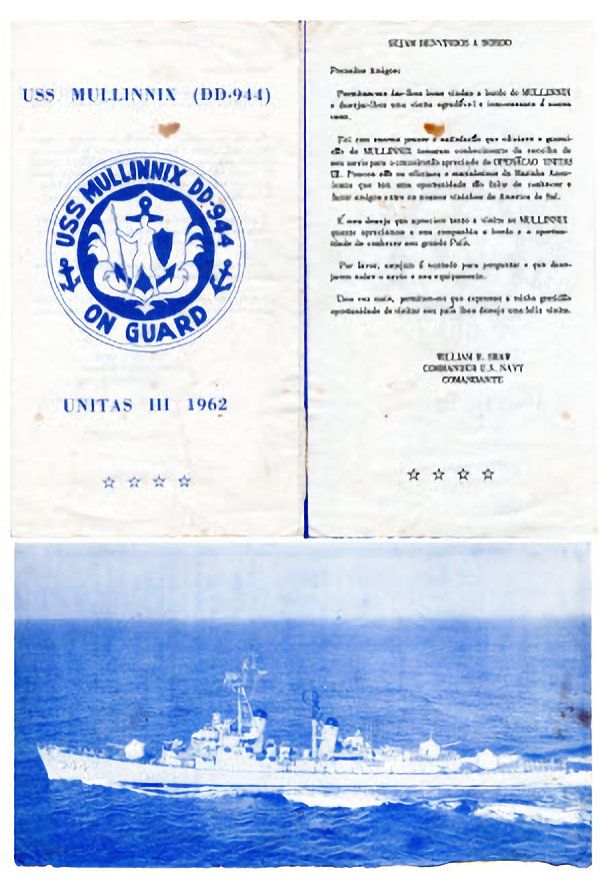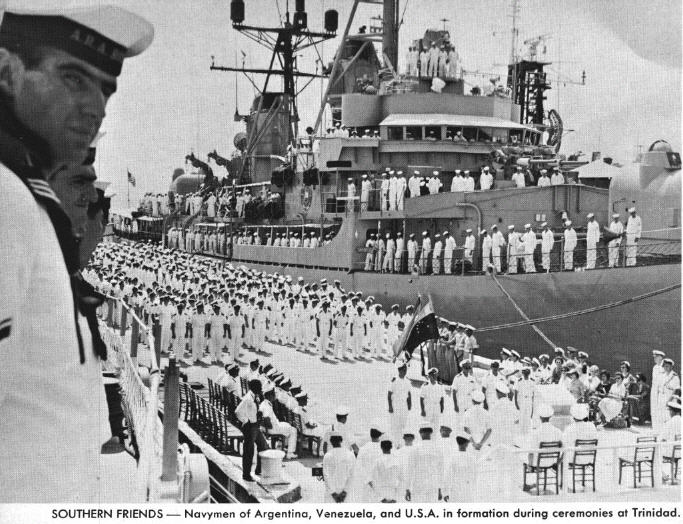
USS Mullinnix during Unitas III Exercises of coast of South America 1962
1962 Welcome Abroad Brochure (PDF)


1962 Mullinnix Deck Logs
January 1962 (PDF)
February 1962 (PDF)
March 1962 (PDF)
April 1962 (PDF)
May 1962 (PDF)
June 1962 (PDF)
July 1962 (PDF)
August 1962 (PDF)
September 1962 (PDF)
October 1962 (PDF)
November 1962 (PDF)
December 1962 (PDF)


Sailing with South America’s Navies
Claude E. Erbsen, Ensign, USN
All Hands Magazine - February 1963
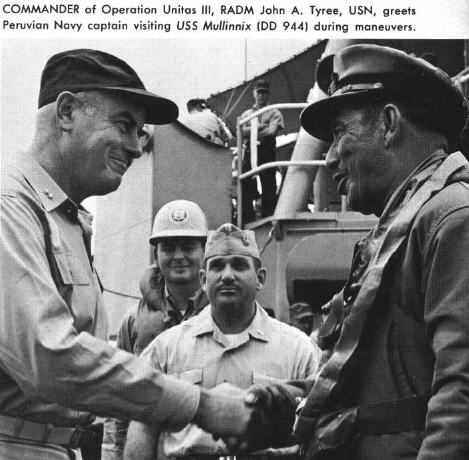 THOUGH ONLY THREE YEARS old, Unitas has established itself as the high point of the South American navies’ annual training schedules, and their ships train throughout the year to reach peak effectiveness during the operation.
THOUGH ONLY THREE YEARS old, Unitas has established itself as the high point of the South American navies’ annual training schedules, and their ships train throughout the year to reach peak effectiveness during the operation.
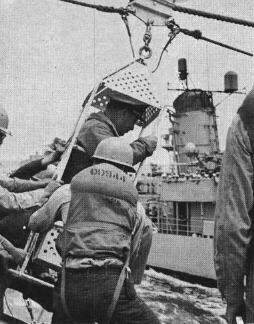 THE CHILEAN UNITS which joined the force in Punta Arenas included the recently acquired British-built destroyers Williams and Riveros, and the French-built oiler Almirante Montt.
THE CHILEAN UNITS which joined the force in Punta Arenas included the recently acquired British-built destroyers Williams and Riveros, and the French-built oiler Almirante Montt.
